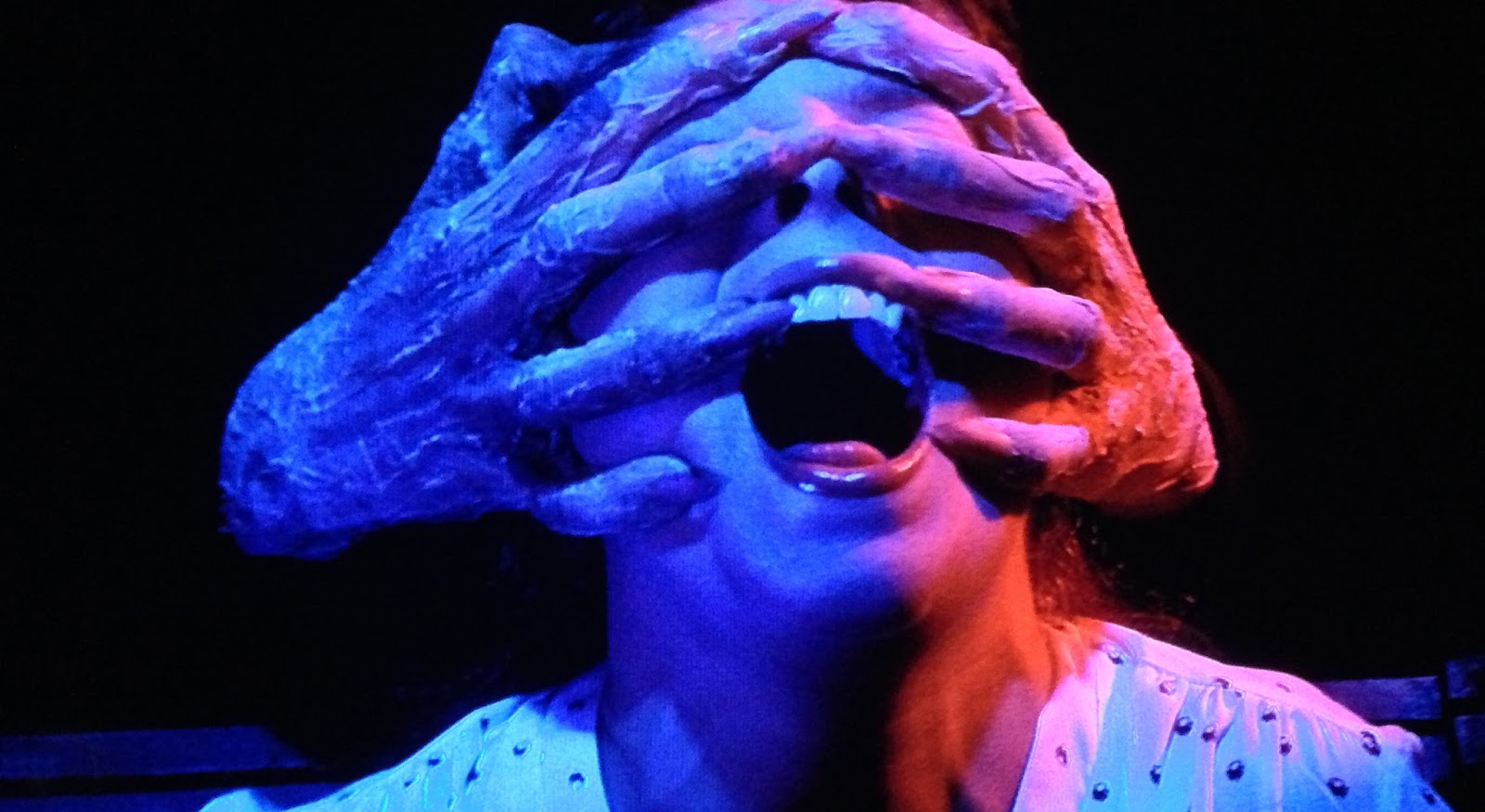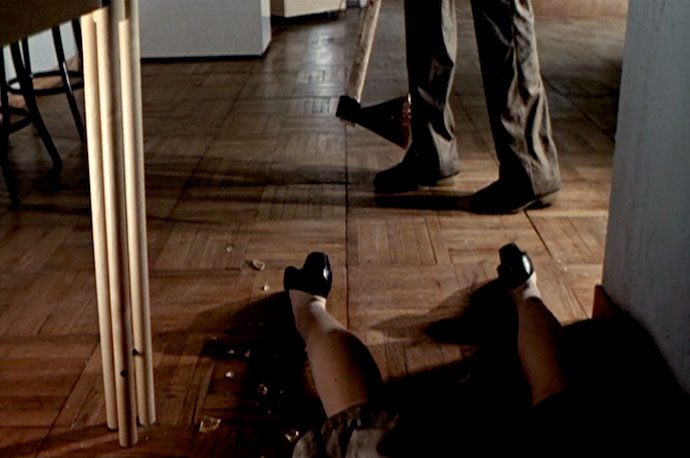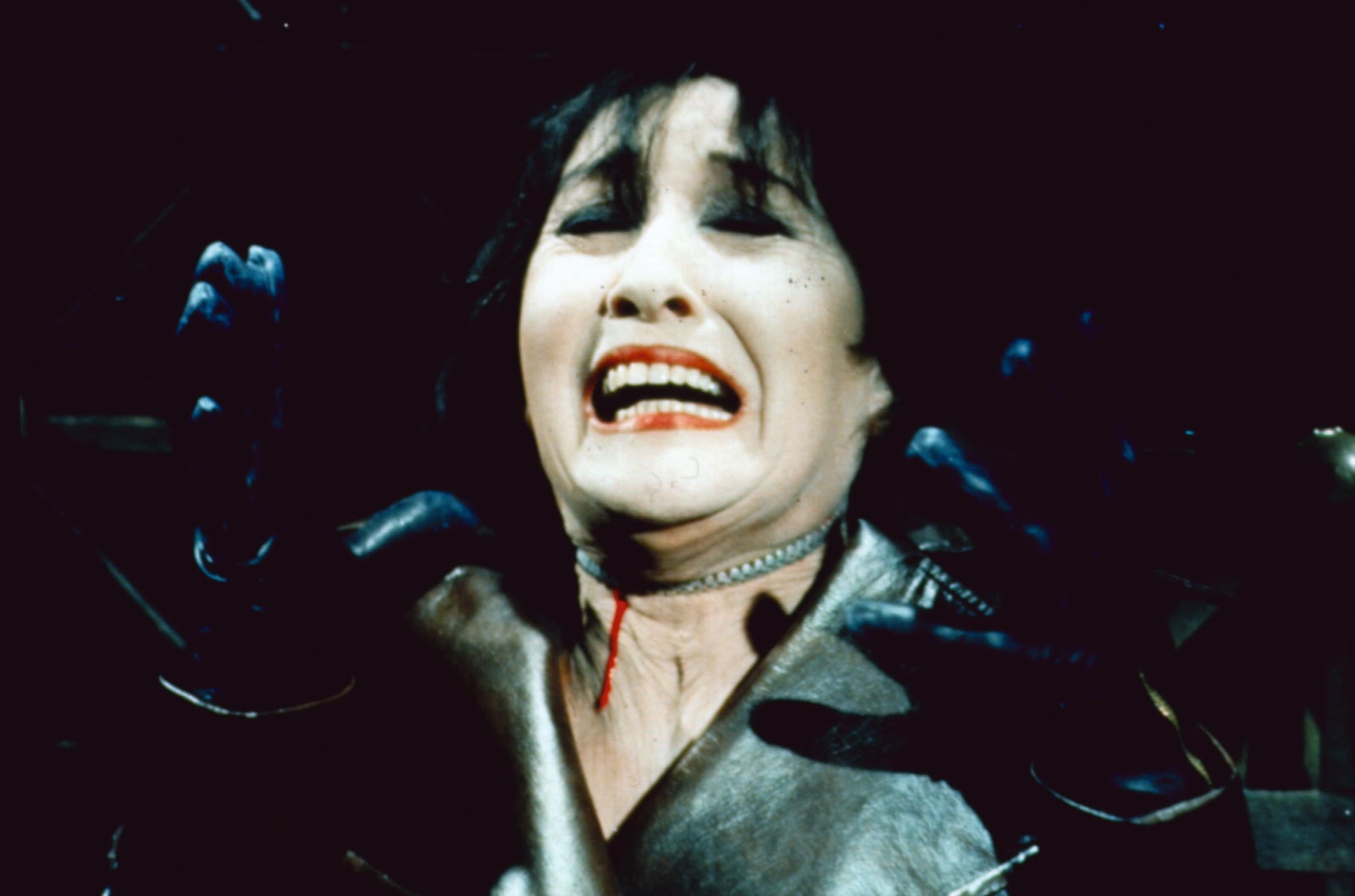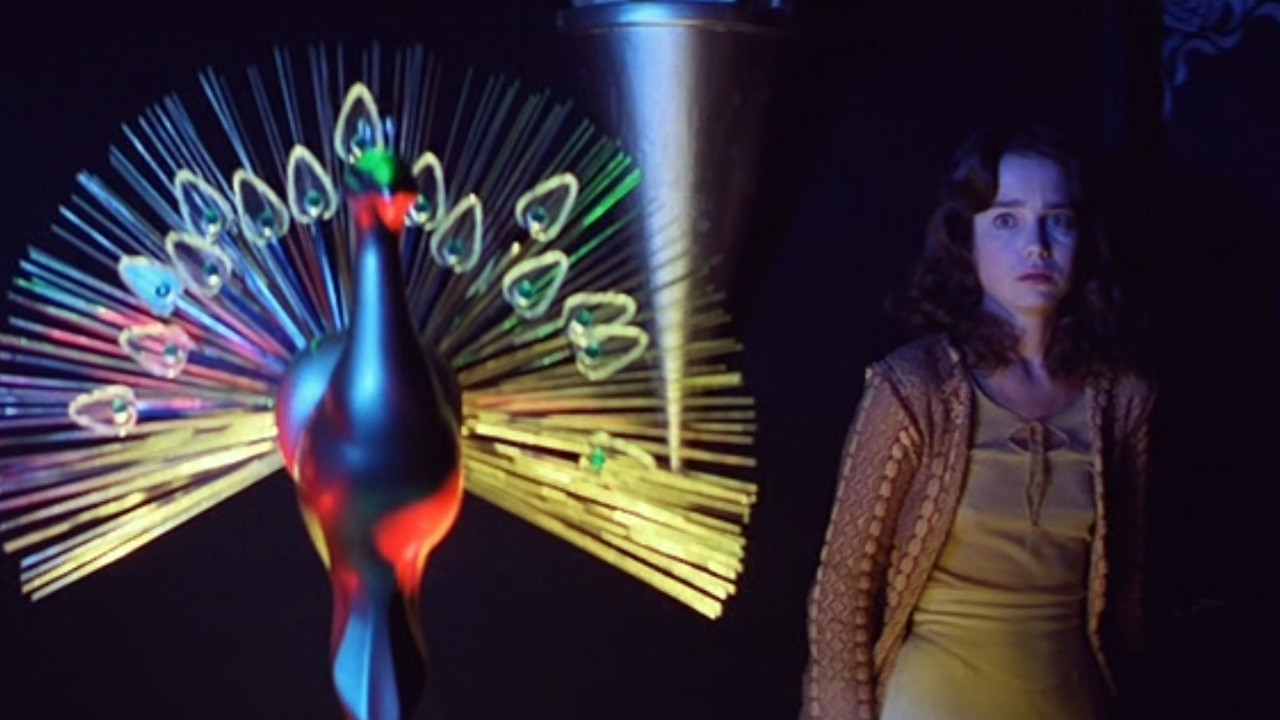5. Opera (Terror at the Opera) – 1987
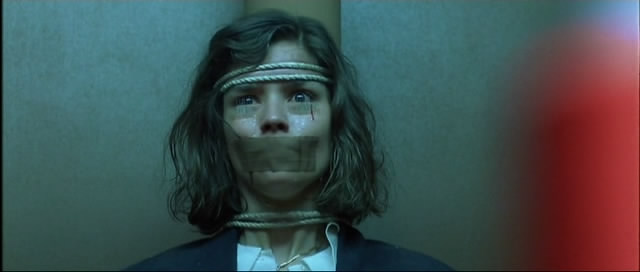
The Plot
Opera singer Betty is pushed into the limelight when the lead in Verdi’s Macbeth is taken out of commission. Being an insecure person, this is not the ideal spot for her to be in. To put even more pressure on her, a murder occurs in the theatre during her first performance. These murders continue, and Betty is stalked by a killer who enjoys making her watch the murders he commits. Before the curtain falls, she will have to confront the killer and hopefully get some answers.
What’s so great about it?
Opera plays out like a Dario Argento version of Phantom of the Opera, with a plot structure that feels very similar. In Opera, the Phantom character is no longer a lonely, shunned figure, but actually a very sick serial killer.
The movie has a number of standout moments which will stick in the viewer’s mind long after seeing the film – the most visually striking of these being the device strapped to Betty’s head which prevents her from blinking while watching an intense stabbing scene. This headgear would not look out of place in A Clockwork Orange.
The most famous scene, and a cleverly crafted set piece, involves a bullet being fired through the peephole of a door at the person looking inside.
The peephole is set up in an earlier scene, but the killer’s taunting – showing the victim the gun and then firing it – is only half the power of this scene. We follow the bullet’s journey from the gun right through the victim’s head, to the back of the room, feeling the impact just as much as the victim does.
As in Phenomena, Argento uses animals we see around us as protectors. Here it’s crows that come to the characters’ aid, clawing out the killer’s eye, which gives us a gorgeous swooping shot above the opera house audience from the crow’s perspective. Opera is much more about spectacle than it is about plot.
4. Inferno – 1980
The Plot
The finding of an ancient book called “The Three Mothers” sets a poet called Rose on a journey through New York. Her brother Mark, living in Rome, receives a letter from Rose which prompts him to call his sister to check on her welfare. When problems arise, Mark decides to go to New York himself. His sister has disappeared and it is up to him to put the pieces together and find out the secret Rose was searching for, no matter what the cost.
What’s so great about it?
Part of Argento’s “Three Mothers” Trilogy (which started with Suspiria and ended with Mother of Tears), this film has a truly incredible opening scene which takes the viewer from the streets of New York to a hidden underwater room. Argento’s characters seem to know no fear when it comes to searching for the facts, and in both this film and Suspiria he uses this to make the scenes seem dream-like.
The camera in this case stays quite static with only mild tracking shots, letting us take in the events that are occurring. In some instances still shots of a hallway or a room add more suspense than a moving shot ever could, the expectation of something happening playing tricks with the minds of the audience. The colours of red, green and yellow frequent the screen, giving the film its own personal identity.
Argento uses an elemental theme for this movie which is very effective, having the movie start with a secret being discovered underwater and end underground with flames hiding the same secret.
3. Tenebrae (Tenebre) – 1982
The Plot
Horror writer Peter Neal is promoting his latest book, and arrives in Rome as a series of murders starts. It seems that the killer has become inspired by Peter’s works, and is killing people in the style of his books. After receiving a letter from the killer, Peter teams up with the local police to find the killer – but will the mystery be solved as easily as they think?
What’s so great about it?
Tenebrae has one of the best reveals of a killer in Argento cinematic history. Taking elements already used in Deep Red and Bird with the Crystal Plumage, Argento gives us not only one plot twist but two. Films such as Scream have certainly been influenced by the kind of plot device employed in this movie.
The film’s power lies in the likability of its lead, Peter Neal (played by Anthony Franciosa), as well as his supporting cast (which includes John Saxon in a nicely executed scene), and the search to find the killer. This is a common theme in Argento’s movies, with the lead character desperate to know the truth behind the murders.
There is a moral subtext which seems to explain the reasons for the killings. Much like in an 80’s Slasher movie, people are murdered at the start due to the killer’s views on what they perceive to be morally reprehensible actions.
For example, a woman is murdered soon after stealing a book and seducing the shop owner to let her off the hook, and then a lesbian couple are brutally murdered. Argento follows these women as they go about their business but a simple turn then leads them into uncomfortable territory. The tension this causes is immense, as is the violence of their deaths.
Tenebrae also has one of the most over the top death scenes I have ever seen. To say too much about it would spoil the surprise, but it is an incredibly grotesque death which almost becomes farcical considering how much blood is used. It is this scene which earned it a place on the UK’s ‘Video Nasties’ list, a list of films which were deemed unsuitable to be shown due to their graphic content.
The two major twists that happen within this movie are grounds alone to put it in your to-watch list.
2. Deep Red (Profondo rosso) – 1975
The Plot
Music teacher Marcus Daly is caught up in a whirlwind of problems when he fails to stop the murder of a medium. Afterwards he notices that a painting previously in the medium’s home is now missing, which sets him off on an investigation to find out what has happened to it. While he gets ever closer to the truth, it seems the killer (who has a fondness for childlike music and games) is also on his tail and quickly sets about eliminating any people who may be able to reveal his identity. When an event from the past is revealed, the killer is finally exposed.
What’s so great about it?
Deep Red manages to utilise childhood icons as horrific set pieces. The constant use of the child’s lullaby, which to most people would be soothing, becomes something to fear because it signifies murder and trauma. Argento’s use of the camera as a character is effective here, sweeping through the scenes while the audience looks on. The use of childhood items like dolls add a macabre feeling to the whole affair.
The deaths, though not as extreme as those in some of his other works, are based around the notion that they could happen to anyone in real life. So scenes involving scalding hot water and hitting yourself on surfaces are used to make them more relatable to the viewer, which certainly works. This makes them more believable than some of the deaths featured in his other movies, and actually makes the viewer wince.
Argento continues to use the element of surprise here with a scene involving an old wall setting up a very interesting (though now very overused in certain types of Horror films) plot point. Deep Red is also a film that is better suited for VHS-viewing rather than DVD because an important plot point is quite easily visible with the clean and re-mastered quality of DVD. The VHS quality being slightly grainy means the twist ending is kept intact.
1. Suspiria – 1977
The Plot
American Ballet student Suzy Bannion arrives in Germany to begin her training at the famous Freiburg dance academy. But what should be a time of rejoicing soon turns to dread. Something strange is happening in the school: maggots fall from the ceiling, people seem to be acting strangely and students appear to be being drugged – or so Suzy thinks. What is actually happening is up to her to find out.
What’s so great about it?
This movie above all others best showcases Argento’s skills as a director as well as his frenzied plots. Argento has always been able to craft a story which confuses and bamboozles an audience. You may think you know the route he is taking you, but just as you think you have figured it out, he changes the course. Suspiria certainly manages to keep the audience on edge in a variety of ways.
The opening scene introduces the viewer to the sense of confusion and distortion that is embedded in this film’s very core. Suzy (played perfectly by Jessica Harper) is driven to the ballet school in the pouring rain. Because of the torrents of rain and the fact that it is night fall, both her and – through her – the audience already feel a sense of alienation. As soon as she gets there, a young woman is murdered upstairs in another scene designed to confuse the audience.
Argento has been criticised by some for his abuse of women on screen, but here it gives the audience extra motivation to care for Suzy because she has no idea what she has gotten herself into. The shocking violence of the murder and the fact the viewer feels like a voyeur to this murder (a common Argento film tool) again knocks us off balance. This device of surprising violence which comes completely out the blue is used frequently throughout the film.
Goblin, who did the soundtrack, were well established by now as the musical group of choice for Argento, and the soundtrack builds up suspense and physically pounds into us when the killings start. The last character in the movie is colour. Argento has a fascination of sorts with colours and visuals, with several films in his canon exploring the effects of art on life.
With this movie, however, the colours come alive and not only adding a sense of tension but also warn the audience of problems ahead. The interesting thing about the movie is that it plays out very much like a weird fevered dream, and if it was not for the fact we witness a murder at the start you would almost be inclined to think this is all in Suzy’s head. It is these elements that have helped make Suspiria a must-see movie, and a cult classic in its own right.
Author Bio: Adam Parker-Edmondston is an independent writer who adores all things film related, no matter the quality, budget or format. He currently writes online for Geek Exchange, Cult Collective, Attack from Planet B, Grizzly Bomb, and fanzine magazine Monster.
